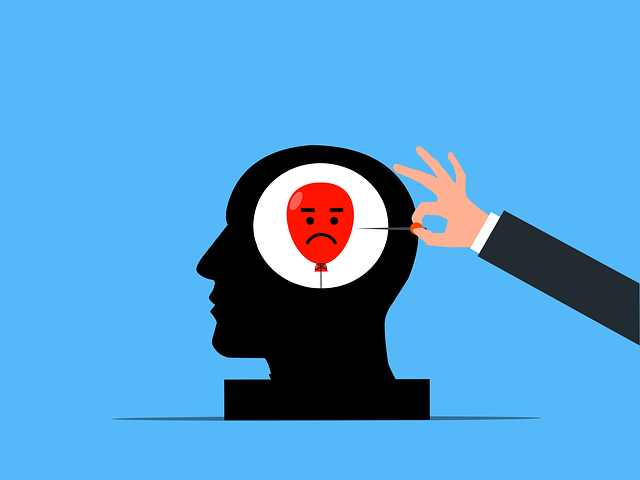Self-healing is the process of taking care of oneself physically, emotionally, and mentally. It involves identifying and addressing the sources of stress and anxiety in one’s life, developing self-awareness, and practicing self-care activities to improve overall well-being. Self-healing is essential for maintaining a healthy and balanced life.
In today’s fast-paced world, people often neglect their own needs in favor of work or other responsibilities. However, taking care of oneself is crucial for maintaining good health and preventing burnout.
Self-healing can help individuals reduce stress, improve physical health, and enhance emotional well-being.
Benefits of Self-Healing
 Self-healing has numerous benefits for individuals who practice it regularly. Some of the benefits include improved physical health, reduced stress and anxiety, increased self-awareness, and enhanced emotional well-being.
Self-healing has numerous benefits for individuals who practice it regularly. Some of the benefits include improved physical health, reduced stress and anxiety, increased self-awareness, and enhanced emotional well-being.
Improved physical health: Practicing self-healing can lead to improved physical health by reducing the risk of chronic diseases such as heart disease, diabetes, and obesity. Self-care activities such as exercise, healthy eating habits, and adequate sleep can help individuals maintain a healthy weight, lower blood pressure, and reduce the risk of developing chronic diseases.
Reduced stress and anxiety: Self-healing can also help individuals reduce stress and anxiety by identifying sources of stress in their lives and developing coping mechanisms to manage them. Relaxation techniques such as deep breathing exercises or meditation can help individuals calm their minds and reduce feelings of anxiety.
Increased self-awareness: Developing self-awareness is another benefit of self-healing. By practicing mindfulness techniques such as meditation or journaling, individuals can become more aware of their thoughts and emotions. This increased awareness can help individuals identify negative thought patterns or behaviors that may be contributing to their stress or anxiety.
Enhanced emotional well-being: Finally, self-healing can enhance emotional well-being by promoting positive emotions such as happiness and contentment. By prioritizing self-care activities and taking time for oneself, individuals can improve their overall mood and outlook on life.
Identifying Your Stressors
Identifying sources of stress is an essential step in the self-healing process. Understanding the sources of stress can help individuals develop coping mechanisms to manage them effectively. Some common sources of stress include work-related stress, financial stress, relationship issues, and health problems.
Identifying triggers: Once individuals have identified the sources of stress in their lives, they can begin to identify triggers that may exacerbate their stress levels. Triggers can be anything from a particular person or situation to a specific thought or feeling.
Recognizing the impact of stress: It is also important for individuals to recognize the impact that stress has on their body and mind. Chronic stress can lead to physical symptoms such as headaches, muscle tension, and fatigue. It can also contribute to mental health issues such as anxiety and depression.
Developing Self-Awareness
Developing self-awareness is another crucial step in the self-healing process. By becoming more aware of one’s thoughts and emotions, individuals can identify negative patterns or behaviors that may be contributing to their stress or anxiety.
Mindfulness practices: Mindfulness practices such as meditation or deep breathing exercises can help individuals become more aware of their thoughts and emotions. These practices involve focusing on the present moment and observing one’s thoughts without judgment.
Journaling: Journaling is another effective way to develop self-awareness. By writing down one’s thoughts and feelings, individuals can gain insight into their emotions and identify patterns or behaviors that may be contributing to their stress or anxiety.
Self-reflection: Finally, self-reflection is an essential component of developing self-awareness. Taking time to reflect on one’s experiences and emotions can help individuals gain a deeper understanding of themselves and their needs.
Creating a Self-Healing Plan
Creating a self-healing plan involves setting goals, prioritizing self-care activities, developing a routine, and seeking support.
Setting goals: Setting goals is an essential part of the self-healing process. Goals can be anything from practicing meditation for 10 minutes a day to taking a yoga class once a week. Setting achievable goals can help individuals stay motivated and track their progress.
Prioritizing self-care activities: Prioritizing self-care activities is another crucial step in the self-healing process. Self-care activities can include exercise, healthy eating habits, and relaxation techniques such as meditation or deep breathing exercises. By prioritizing these activities, individuals can improve their overall well-being and reduce stress levels.
Developing a routine: Developing a routine is also important for maintaining a self-healing practice. By incorporating self-care activities into one’s daily routine, individuals can make them a habit and ensure that they are consistently taking care of themselves.
Seeking support: Finally, seeking support from friends, family, or a therapist can be beneficial for individuals who are struggling with stress or anxiety. Having someone to talk to can provide emotional support and help individuals stay motivated on their self-healing journey.
Practicing Self-Care
Practicing self-care is an essential component of the self-healing process. Self-care activities can include exercise, healthy eating habits, adequate sleep, and relaxation techniques such as meditation or deep breathing exercises.
Exercise: Exercise is an effective way to reduce stress levels and improve physical health. Regular exercise can help individuals maintain a healthy weight, lower blood pressure, and reduce the risk of chronic diseases such as heart disease and diabetes.
Healthy eating habits: Eating a healthy diet is another important aspect of self-care. A diet rich in fruits, vegetables, whole grains, and lean protein can provide the nutrients necessary for good health and reduce the risk of chronic diseases.
Adequate sleep: Getting enough sleep is also crucial for maintaining good health. Lack of sleep can lead to physical symptoms such as fatigue and headaches and contribute to mental health issues such as anxiety and depression.
Relaxation techniques: Finally, relaxation techniques such as meditation or deep breathing exercises can help individuals reduce stress levels and promote relaxation. These techniques involve focusing on the present moment and calming the mind.
Maintaining Your Self-Healing Journey
Maintaining a self-healing practice requires commitment and dedication. Staying committed to one’s plan, adjusting as needed, celebrating progress, and continuing to prioritize self-care are all essential components of maintaining a self-healing journey.
Staying committed to your plan: Staying committed to one’s plan involves setting achievable goals and consistently practicing self-care activities. By staying committed, individuals can maintain their progress and continue to improve their overall well-being.
Adjusting as needed: Adjusting one’s plan as needed is also important for maintaining a self-healing practice. Life circumstances may change, and individuals may need to adjust their goals or routines accordingly.
Celebrating progress: Celebrating progress is another essential component of maintaining a self-healing journey. By acknowledging one’s achievements, individuals can stay motivated and continue to make progress towards their goals.
Continuing to prioritize self-care: Finally, continuing to prioritize self-care is crucial for maintaining a self-healing practice. By making self-care activities a habit, individuals can ensure that they are consistently taking care of themselves and improving their overall well-being.
Self-healing is an essential component of maintaining good health and well-being. By identifying sources of stress, developing self-awareness, creating a self-healing plan, practicing self-care activities, and maintaining one’s progress, individuals can improve their overall well-being and reduce stress levels. Starting a self-healing journey may seem daunting at first, but with commitment and dedication, anyone can achieve their goals and improve their quality of life.









